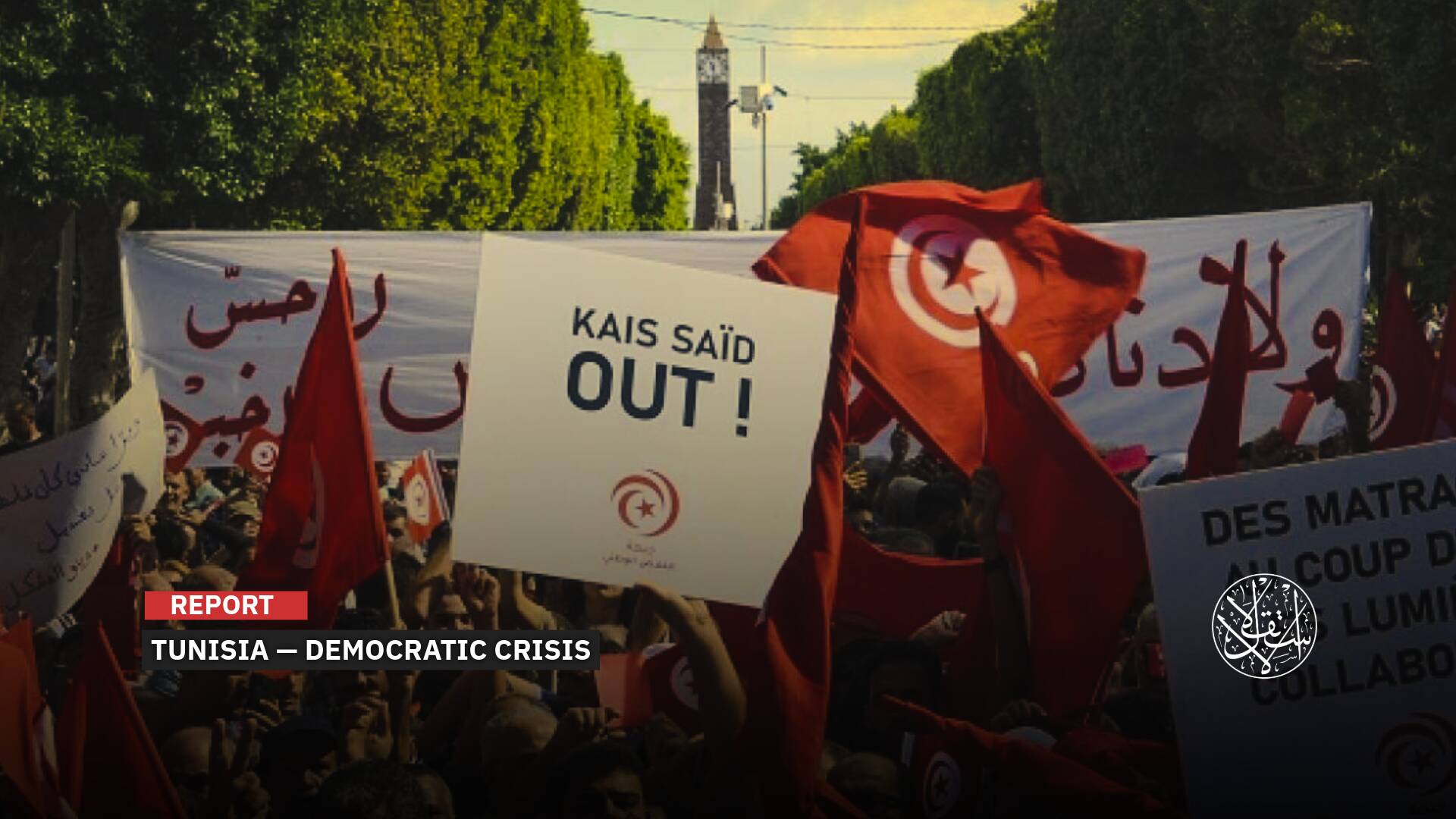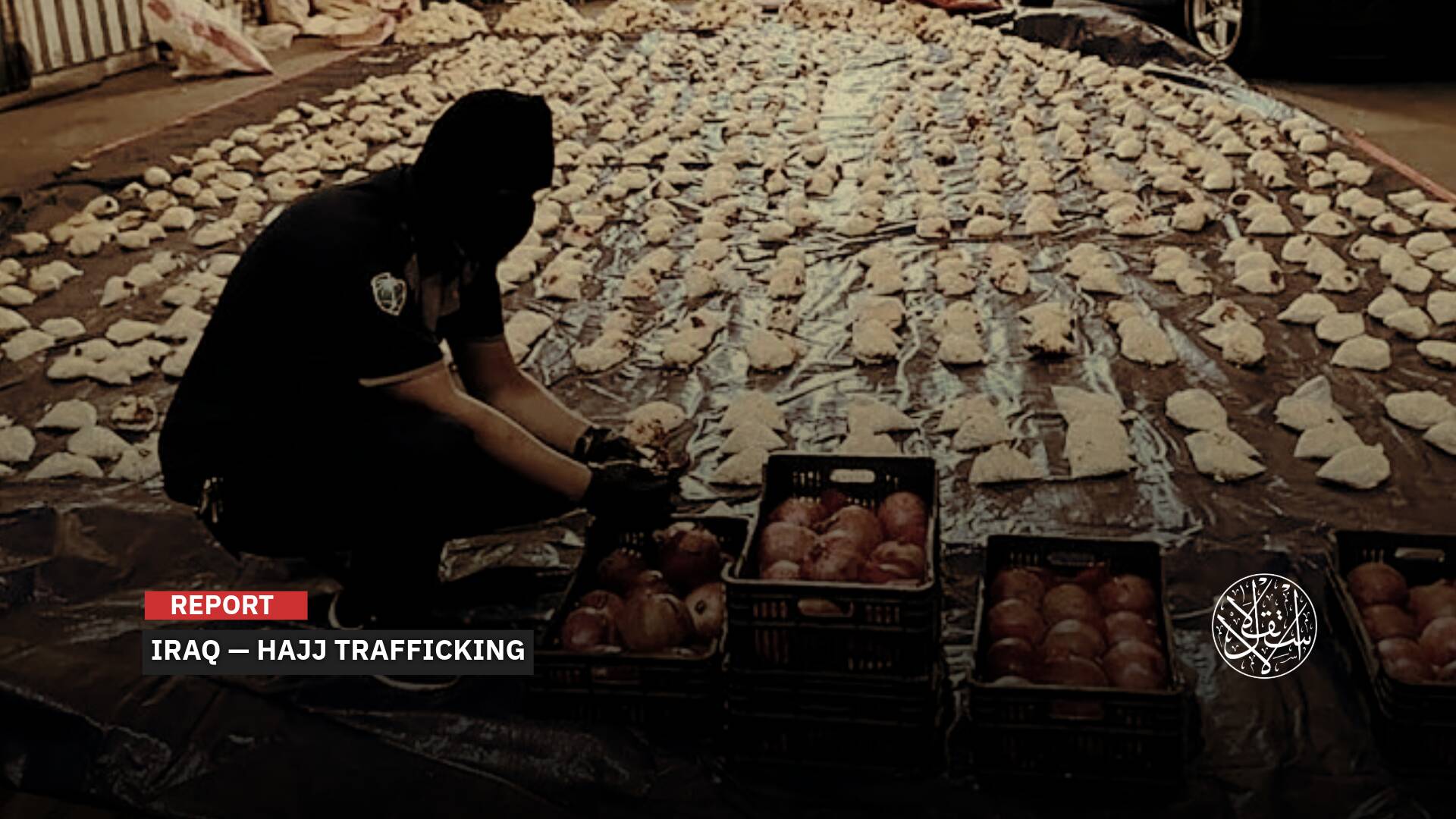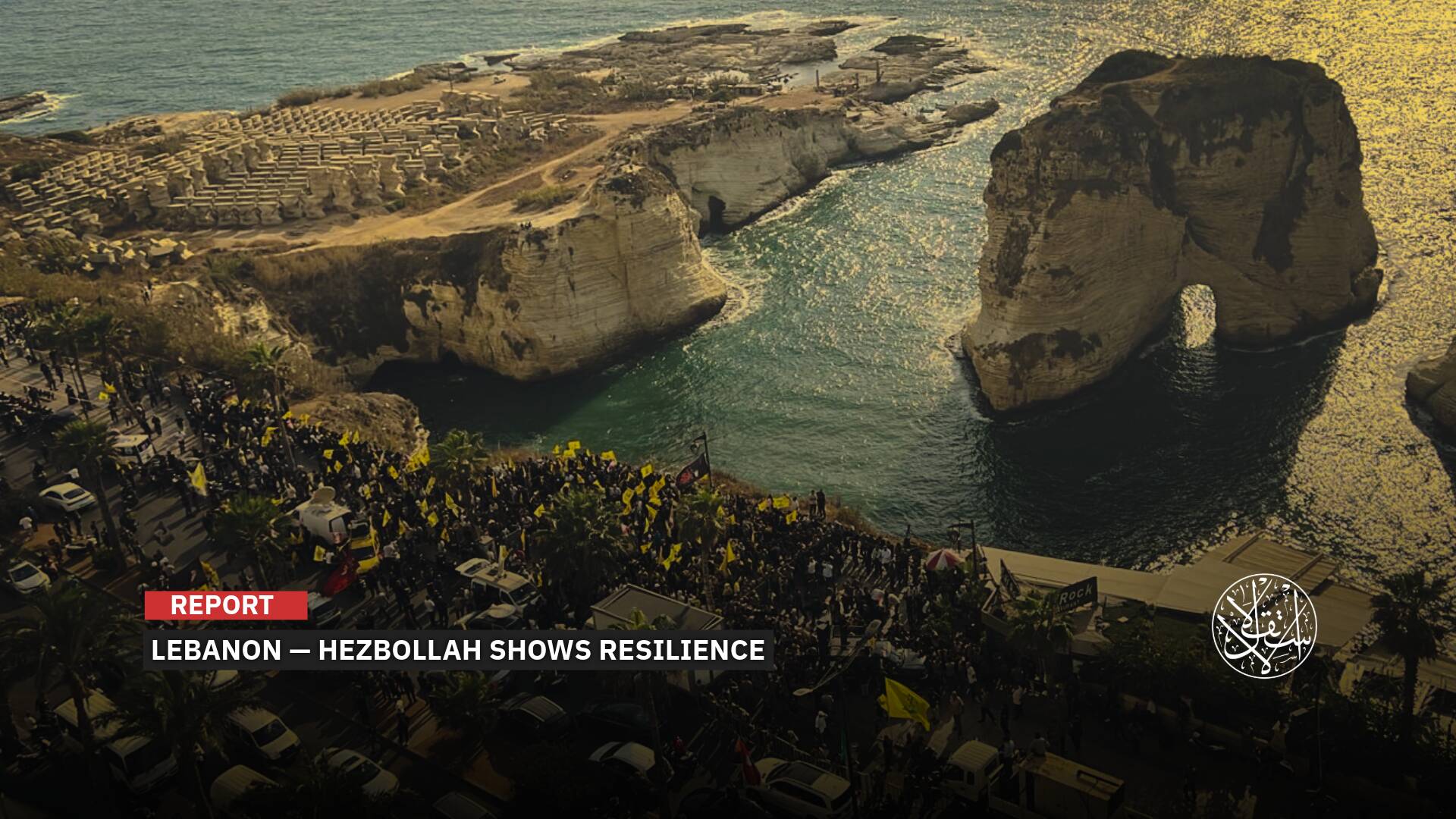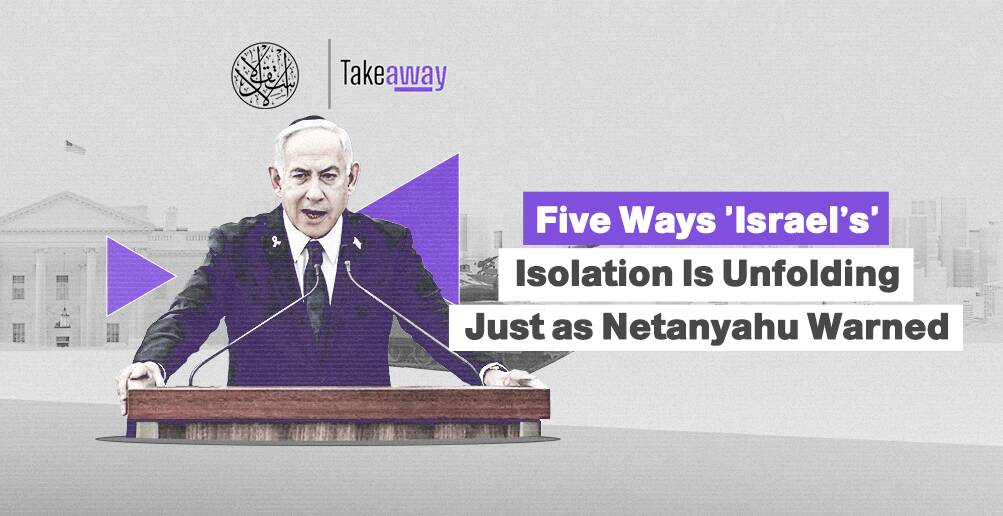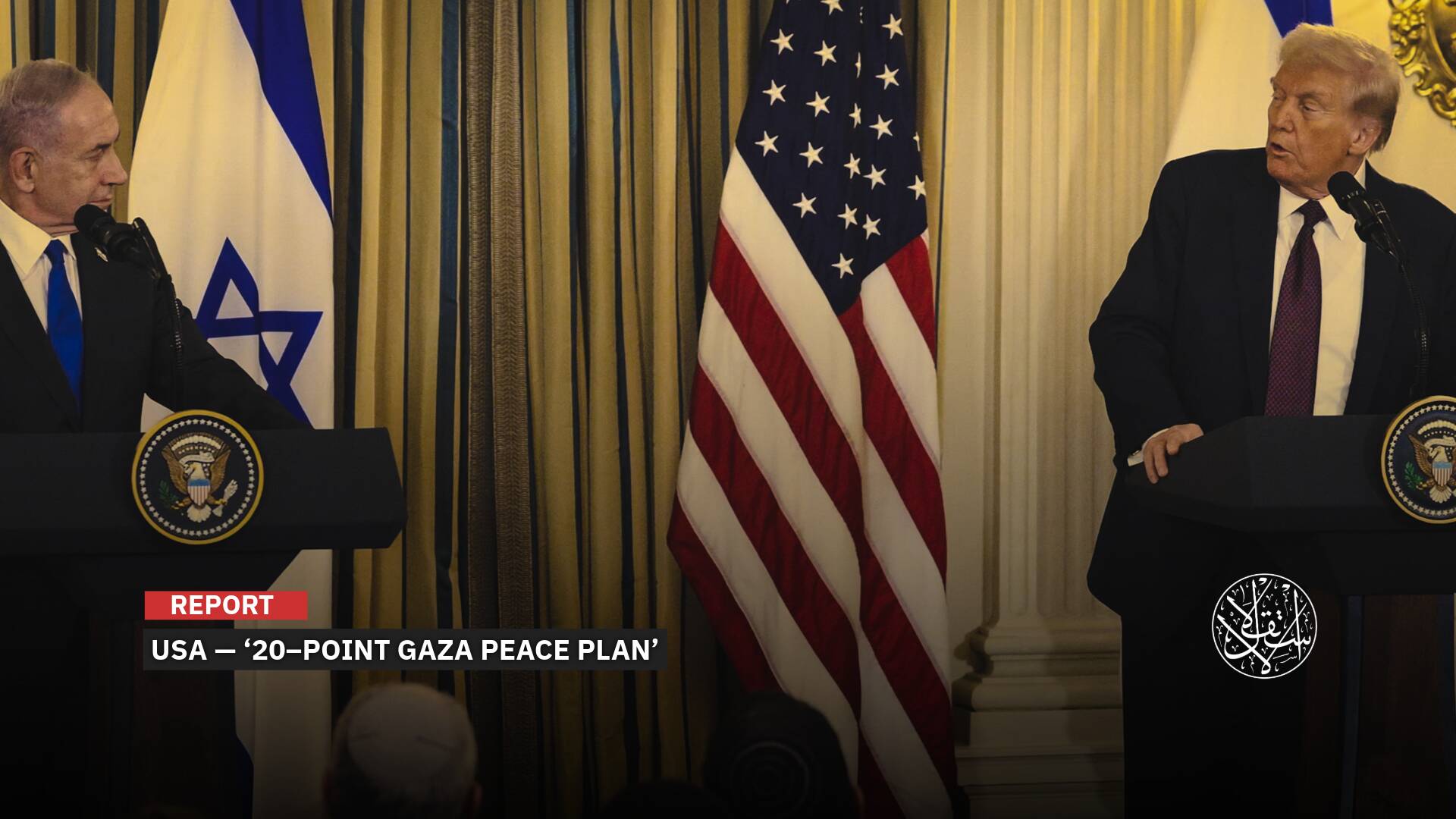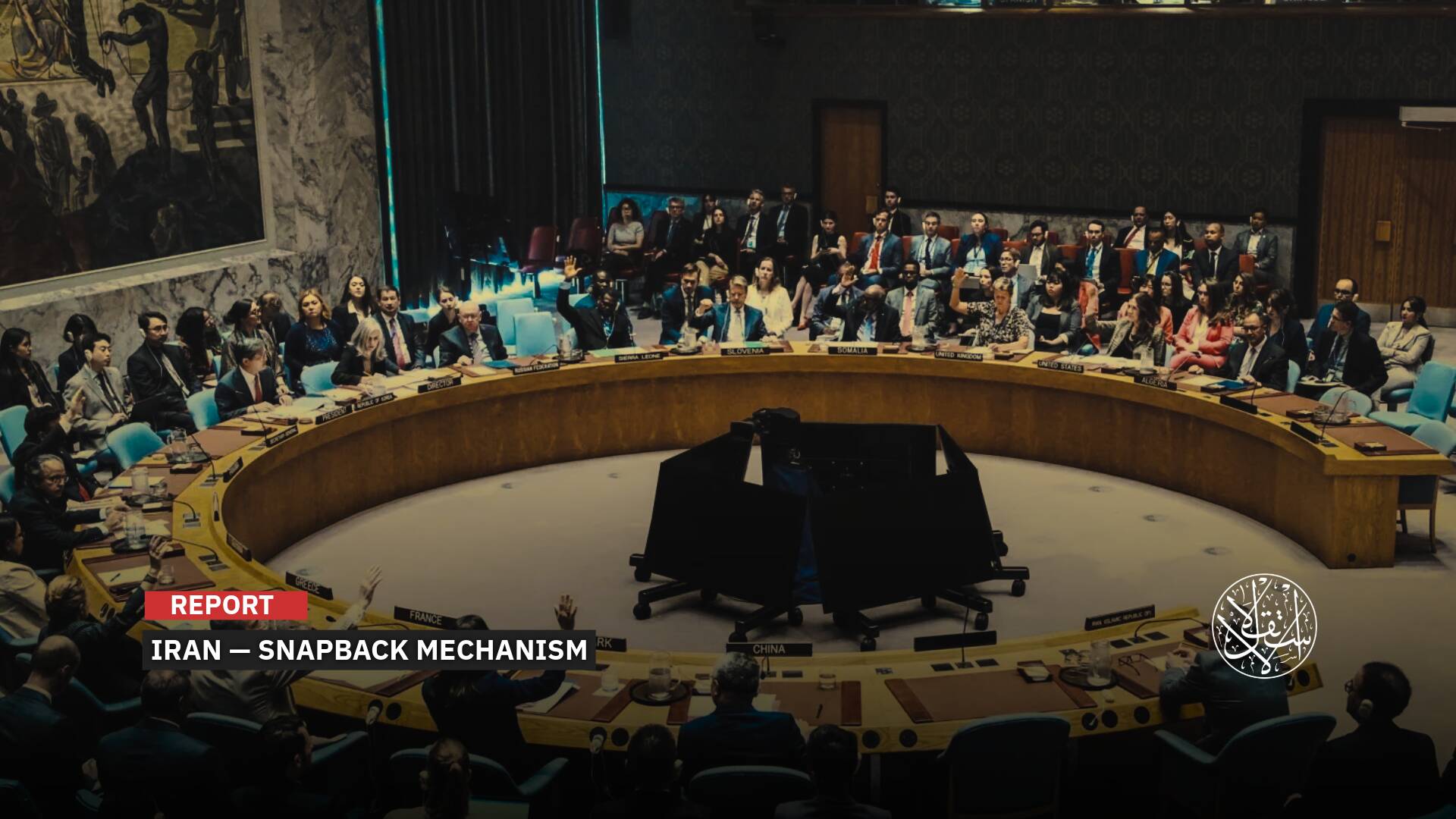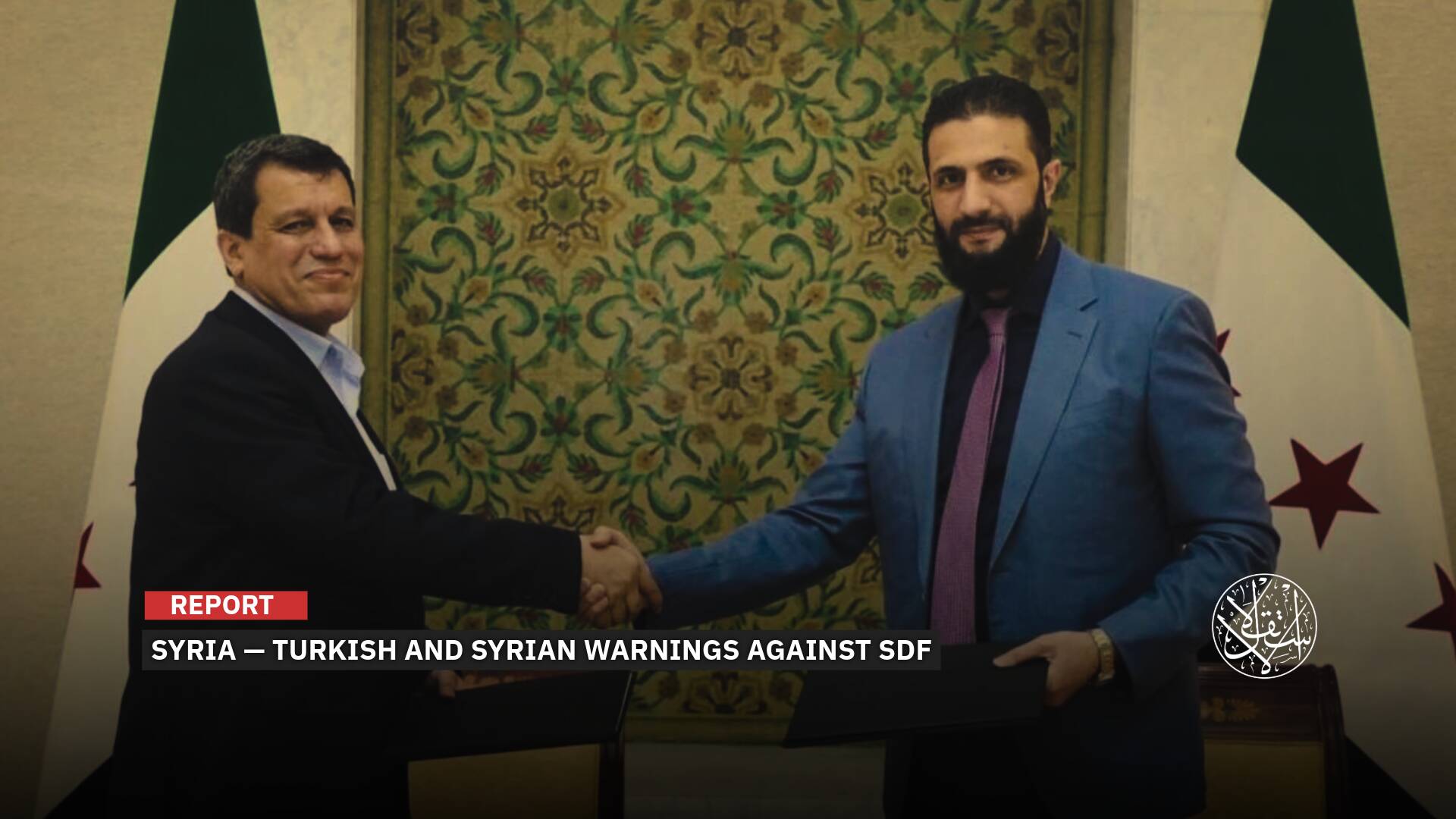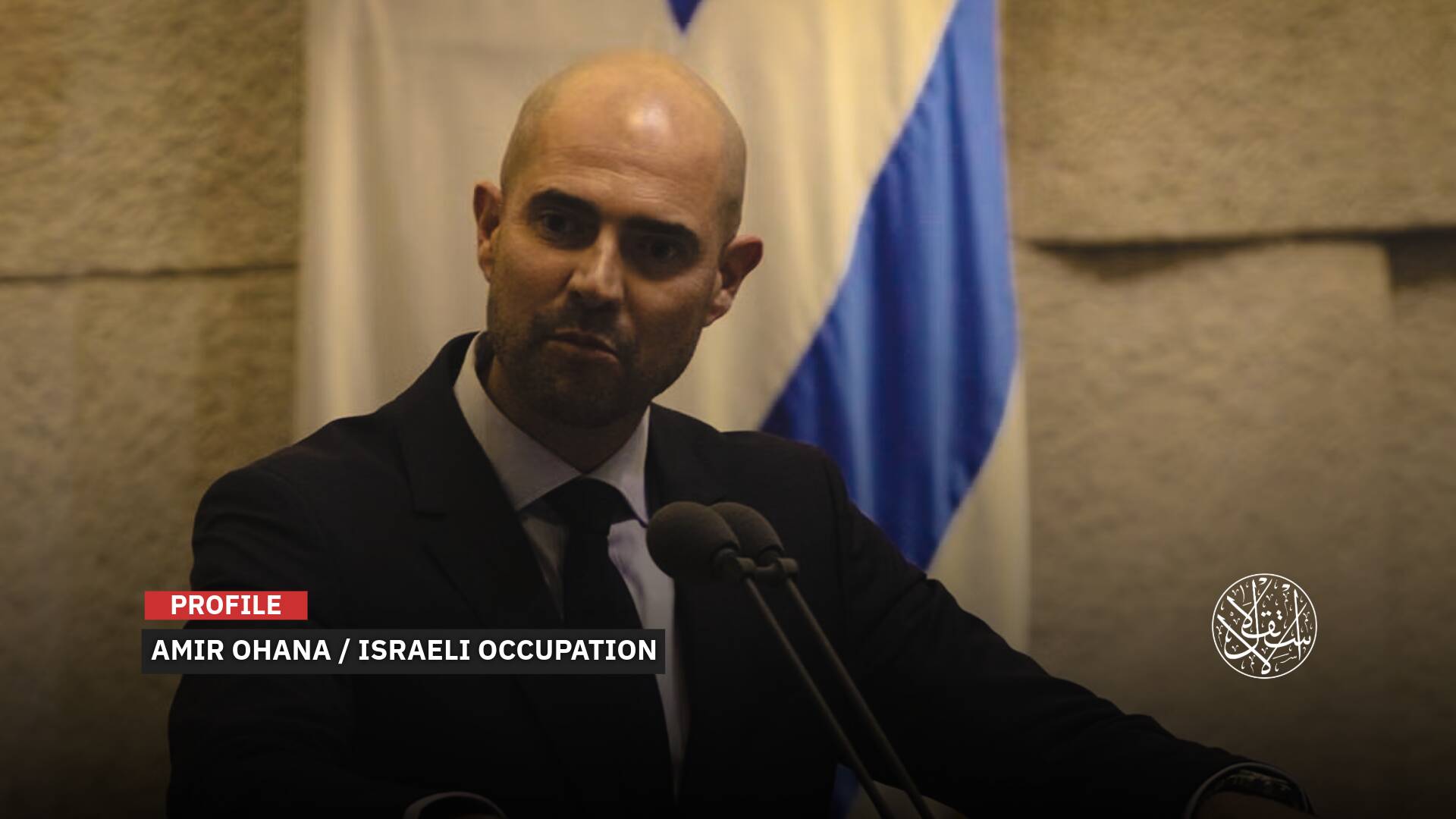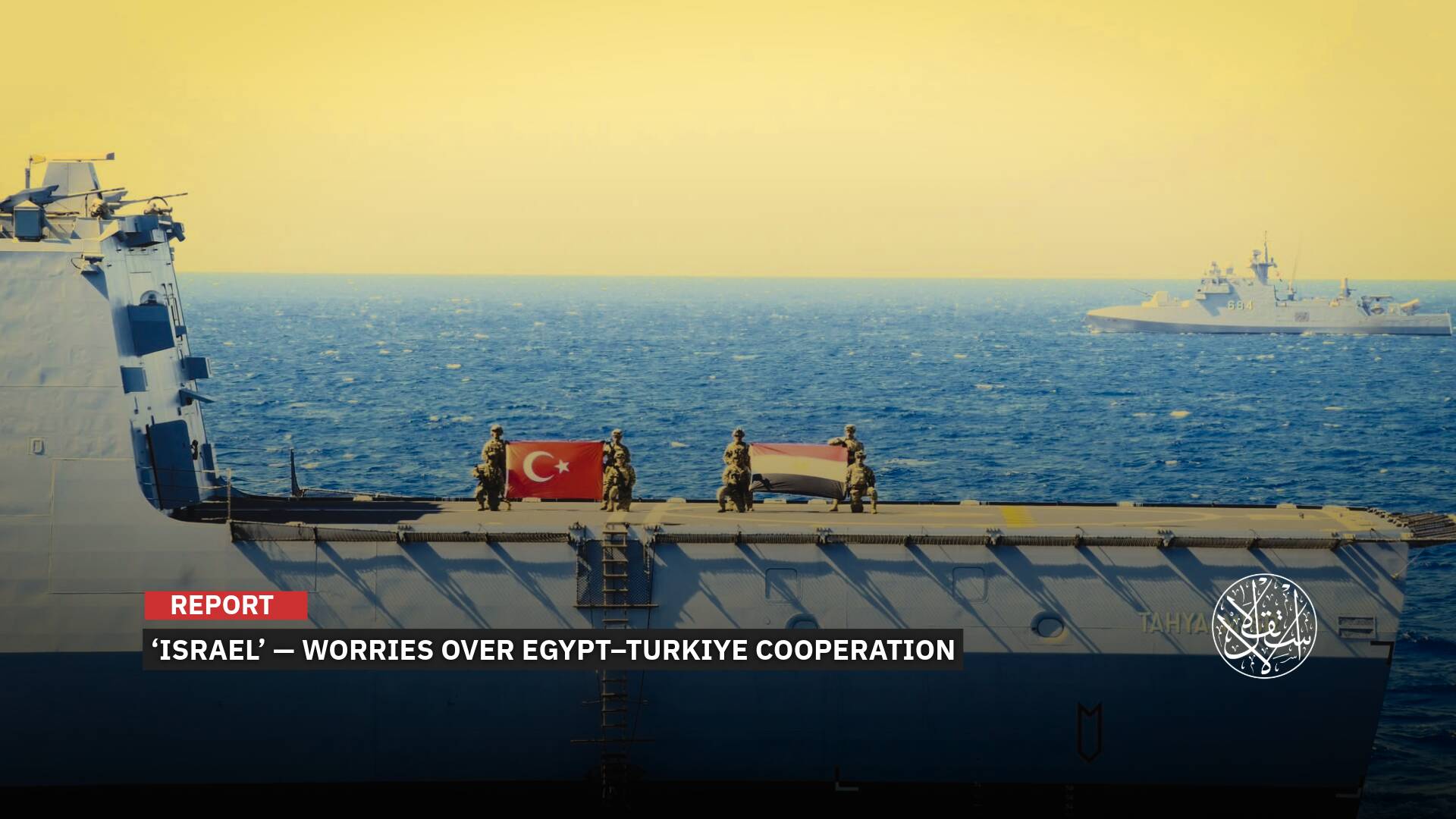Trump Rejects ‘Israel’s’ West Bank Annexation: Media Move or Prelude to Normalization?

Trump’s rejection of “Israel’s” West Bank annexation reflects his effort to advance a comprehensive “peace” plan for the region.
Despite President Donald Trump’s pledge on September 23, 2025, to seven Arab and Muslim leaders that he would block “Israel’s” annexation of the West Bank, the reality on the ground tells a different story.
The annexation plan Trump said would not happen is already being implemented without pause, even though Arab officials claim they convinced him to reject it.
Since the moment it took office, “Israel’s” current government has rallied behind a single guiding credo that mirrors the far-right spectrum: settlements without end and control without restraint.
It has set a strategic goal pursued through settlement expansion, full territorial control, and the permanent fragmentation of Palestinian geography.
In recent weeks, the Israeli Occupation’s parliament and government approved the E1 plan, which splits the West Bank in half, builds settlements in its center, and isolates the area from Occupied Jerusalem.
The question remains whether Trump’s rejection of annexation is an attempt to save “Israel” from itself and preserve the normalization agreements he considers his greatest achievement or merely a symbolic statement while he turns a blind eye to actual annexation and Judaization, especially given that he moved the U.S. embassy to Occupied Jerusalem, declaring it “Israel’s” capital within the West Bank.

How Annexation Is Carried Out Quietly
Plans to annex the West Bank mean applying Israeli Occupation laws and sovereignty in practice over parts of Palestinian territory, even though it is considered occupied. There are two types of annexation.
The first is legal or legislative annexation, carried out through laws or Knesset decisions that formally impose Israeli Occupation sovereignty over parts of the West Bank. “Israel” has already taken such steps through a series of legislations without officially declaring annexation.
The second is practical or de facto annexation, involving measures that give the Israeli Occupation security, administrative, and economic control over the West Bank. This includes expanding settlements, transferring authority from the army to Israeli ministries, and connecting settlements through projects like E1, which is already underway.
The Washington Post reported on September 28, 2025, that 2025 has seen an acceleration of de facto annexation, including approval of dozens of new settlements and implementation of linking projects such as E1 around Occupied Jerusalem. These measures constitute practical annexation even without a formal legislative declaration.
The acceleration of de facto annexation began in May 2025, coinciding with the 77th anniversary of the Nakba. “Israel’s” government, dominated by the ultra-Orthodox right, launched a gradual plan to annex most of the West Bank. According to Israeli newspapers, the declared goal is to impose sovereignty over 60 percent of the territory occupied since 1967.
The government also decided to establish 22 new settlements across the West Bank, the largest number approved at one time since the Oslo Accords, according to Yonatan Mizrachi of the Peace Now organization. The 24,000 housing units advanced this year are double the previous annual record, he added. Even before these violations, about half a million Israelis were estimated to live in nearly 150 illegal West Bank settlements.
To start annexation formally, “Israel’s” war cabinet issued a decision on May 11, 2025, allowing settlers to register land ownership in Area C of the West Bank for the first time since 1967. Area C accounts for 60 percent of the West Bank. Far-right Finance and Security Minister Bezalel Smotrich described the cabinet decision as “part of the normalization and de facto sovereignty revolution that we are leading in Judea and Samaria [...]. The State of Israel is taking responsibility for the territory as a permanent sovereign, and [land registration] will create legal certainty and enable land reserves for settlement development.”
The most critical development came in August 2025 when Smotrich approved the E1 settlement plan designed to separate Occupied Jerusalem from the West Bank and make a Palestinian state impossible. The E1 plan aims to connect Occupied Jerusalem with Israeli settlements east of the city, including Ma’ale Adumim (occupied al-’Eizariya), by confiscating Palestinian land and establishing new settlements.
The project links Ma’ale Adumim, located between Occupied Jerusalem and Jericho, with 3,401 new housing units, effectively severing geographic continuity between Ramallah and Bethlehem. On August 20, the Israeli Occupation’s government formally approved the plan, which includes building 3,412 units in E1, creating a barrier between the north and south of the West Bank, blocking any future Palestinian state, according to Haaretz.
Netanyahu signed the E1 settlement plan on September 11 in Ma’ale Adumim, signaling it as a “knockout blow to the idea of a Palestinian state.”
According to reports by Kerem Navot and Peace Now, settlement outposts currently control about 786,000 dunams, roughly 14 percent of the West Bank. The E1 project alone would give the Israeli Occupation practical control over 60 percent of the territory once completed.
E1 covers 12 square kilometers and falls administratively under Ma’ale Adumim. Although construction plans have existed since the Rabin government, implementation has been repeatedly delayed for political reasons since 2005. Building the settlement barrier creates a continuous Israeli presence from the central West Bank to Occupied Jerusalem, isolating the city and al-Aqsa Mosque and eliminating the possibility of East Jerusalem serving as the capital of a Palestinian state.
As of May 2025, there were 551 settlements, outposts, and military bases in the West Bank, housing over 770,000 settlers, roughly half of them in the Occupied Jerusalem governorate, according to the Palestinian Central Bureau of Statistics.

Promises Without Follow-Through
On September 23, President Trump assured Arab and Muslim leaders during a meeting that he would not allow Netanyahu to annex the West Bank, insisting on the matter, according to six sources familiar with the discussions.
The sources confirmed to Politico that Trump promised “Israel” would not be allowed to seize the West Bank, which is governed by the Palestinian Authority and not Hamas.
Trump reiterated the point to reporters at the Oval Office on September 25, 2025, saying, “I will not allow Israel to annex the West Bank. Nope, I will not allow it. It’s not going to happen.”
“There’s been enough. It’s time to stop now.”
He said he had raised the issue with Netanyahu but emphasized that his decision stood regardless of whether he spoke to him or not.
This followed efforts by Arab leaders to convince President Trump that any Israeli advance into the West Bank would undermine the Abraham Accords, according to reports.
A Guardian analysis on September 26 noted that Trump’s acceptance of rejecting West Bank annexation reflects his effort to present a comprehensive “peace” plan for the region to end the ongoing war on Gaza.
By doing so, he effectively thwarted Netanyahu’s plan to respond to the recognition of Palestine as a state by five Western countries through formal annexation, even as Israeli settlements continue to expand, threatening the possibility of a Palestinian state and raising broad international concerns.
A senior Israeli official told The Times of Israel earlier this week that the Trump administration privately cautioned “Israel” against annexing the West Bank in response to the recent decisions by Western countries to recognize Palestinian statehood.
Despite this, a senior political source, who spoke with leading American media hosts and editors, confirmed to The Jerusalem Post on Saturday that Prime Minister Benjamin Netanyahu intends to raise the issue of sovereignty in the West Bank with U.S. President Donald Trump, despite Trump’s stated opposition to the move.
American analysts criticized Trump’s shifting stance, swinging between traditional support for “Israel” and softer tones to avert a regional crisis, noting he publicly opposed West Bank annexation mainly to placate Arab and European audiences.
In practice, however, he does not prevent the “de facto annexation” carried out by the Israeli Occupation through administrative measures and settlement expansion.
Although Trump formally halted annexation, the UAE sought to justify its attendance at Netanyahu’s UN speech and Foreign Minister Abdullah bin Zayed’s meeting with him in New York as an effort to “block” the annexation of the West Bank.
UAE adviser Anwar Gargash claimed that “the issue of West Bank annexation was dropped” following the meeting between Netanyahu and the UAE foreign minister in New York.
The reason Arab leaders persuaded Trump, or why Abdullah bin Zayed convinced Netanyahu, was the same in both cases: the threat that the Abraham Accords would collapse if the Israeli Occupation annexed the West Bank.
The problem is not a formal announcement to halt annexation. In practice, as Finance Minister Bezalel Smotrich put it, “Israel” is separating the northern West Bank from the south, effectively eliminating any chance for a future Palestinian state.
Israeli analyst Eyal Zisser, writing in the right-wing daily Israel Hayom on September 27, downplayed Trump’s remarks about opposing West Bank annexation, noting that “Israel” had already annexed Occupied Jerusalem, moved its capital there, and nothing happened.
He explained that a Palestinian state has not been established, despite recognition by 147 countries (now 152 of 193), not only because “Israel” exercises de facto control over the land, but also due to the Palestinian Authority’s persistent failure to build effective governing institutions.
Maariv reported in August that Netanyahu instructed his ministers not to speak publicly about “Israel’s” pursuit of sovereignty over the West Bank and to maintain secrecy, fearing it could embarrass Trump with Arab leaders and jeopardize his support for the move.

Embarrassing the Arab States
In August, Axios reported that U.S. envoy Steve Witkoff warned that West Bank annexation would jeopardize two key issues. First, it could undermine Arab cooperation with “Israel” and Washington, threaten the Abraham Accords, and embarrass Arab leaders in front of their populations. Second, annexation would hinder Washington’s ability to work with Arab states on post-Gaza reconstruction and stabilization plans.
According to three Israeli organizations opposing the plan—Peace Now, Ir Amim, and the Association for Environmental Justice—the E1 area is the only remaining Palestinian land reserve in the heart of three major West Bank cities: Ramallah, East Jerusalem, and Bethlehem, home to roughly one million Palestinians.
The Palestinian Foreign Ministry warned that this would completely isolate al-Quds (Occupied Jerusalem) from its Palestinian surroundings, engulfing it in settlements and urban developments connected to the Israeli interior.
Researcher Amir Daoud, Director General of Publishing and Documentation at the Wall and Settlement Resistance Commission, highlighted the transformation of Israeli settlement projects in the West Bank after October 7, 2023, and their role in accelerating creeping annexation and imposing Israeli Occupation sovereignty. In a study published by the Institute for Palestine Studies in fall 2025, Daoud explained how “Israel” exploited the war on Gaza and the accompanying destruction to fast-track preexisting settlement plans.
He noted that the colonial settlement apparatus implemented parallel measures under the guise of war and security to create facts on the ground and effect deep geopolitical changes in Palestinian territory.
One major shift accelerating annexation after Netanyahu’s government formation was the removal of the army ministry from planning responsibilities and the transfer of authority to Smotrich, who was appointed as the minister overseeing settlement administration. Smotrich then became the primary authority over the West Bank civil administration, meaning annexation plans no longer required government or war minister approval. Once he approved settlement construction, projects moved directly to implementation.
These measures included restricting Palestinian development under licensing pretexts while prioritizing settlement expansion, particularly in outposts. Daoud highlighted a series of laws submitted to the Knesset aimed at enabling settlement and annexation, including legislation allowing settlers to purchase land in the West Bank, renaming the West Bank as Judea and Samaria, and extending the Galilee and Negev authorities to cover settlements in the southern West Bank. These laws aim to alter the status of the West Bank fundamentally.
The cumulative effect of these measures, Daoud warns, is to create a new reality on the ground that accelerates de facto annexation while systematically undermining the possibility of a viable Palestinian state.
Sources
- Shifts in Israel’s West Bank Settlement Drive After October 7, 2023 [Arabic]
- Rubio not opposed to Israeli annexation of occupied West Bank: report
- ‘It’s not going to happen’: Trump says he won’t allow Israel to annex West Bank
- Trump says he ‘will not allow’ Israel to annex West Bank after lobbying from allies
- 'Time to stop': Trump vows Israel will not annex West Bank
- Trump promises Arab, Muslim leaders he won’t let Israel annex the West Bank
- Sweeping Israeli actions transform West Bank in shadow of Gaza war
- After Trump rejects West Bank annexation, right-wing MKs urge PM to do it anyway
- Settlement & Annexation Report: May 16, 2025
- Israel Approves Settlement Construction Dividing West Bank; Smotrich: 'Erasing Palestinian State'


